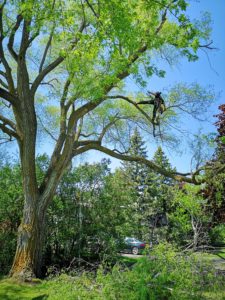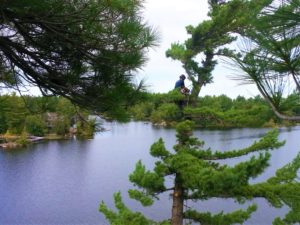Tree Pruning / Tree Trimming
Tree pruning is an essential aspect of tree care. It involves the careful removal of specific branches or parts of a tree to enhance its health, safety, and aesthetics. Proper tr ee pruning techniques can help trees thrive, reduce the risk of disease, and promote safety.
ee pruning techniques can help trees thrive, reduce the risk of disease, and promote safety.
Why Prune Trees?
Health and Vitality – Pruning can improve a tree’s overall health and vitality. Removing dead, diseased, or damaged branches allows the tree to allocate resources more efficiently and stimulates new growth.
Safety – Eliminating weak, overgrown, or low-hanging branches can reduce the risk of falling limbs, enhancing safety for people and property. Pruning is especially crucial in urban areas.
Aesthetics – Properly pruned trees look more appealing and well-maintained, adding value to your property and enhancing the overall landscape.
Disease and Pest Management – Pruning can remove diseased or infested branches, preventing the spread of pathogens and pests throughout the tree.
Improved Air Circulation – Thinning the canopy through selective branch removal enhances air circulation, reducing humidity and minimizing the conditions that favor fungal diseases.
Space Management – Tree pruning helps manage space and maintain clearances for buildings, power lines, and walkways, preventing interference and hazards.
Pruning Objectives:
It is important to identify your pruning objectives, whether it’s shaping, thinning, raising the canopy, or addressing specific issues like disease or damage.
Timing – The timing of pruning is important for various reasons, including disease and pest management, enhanced visibility, reduced stress, preservation of flower buds, and overall health and vigor.
Tools – We use sharp, clean, and appropriate tools to make clean cuts. Common tools include secateurs, handsaw, polesaw, and chainsaw.
Proper Technique – We always make cuts just outside the branch collar or the branch bark ridge to aid in sealing and minimize the risk of disease entry.
Crown Thinning – This involves selective removal of branches to reduce canopy density, allowing more light and air to penetrate. It can improve tree structure and minimize wind resistance.
Crown Raising – Raising the crown involves removing lower branches to provide clearance for structures, vehicles, or pedestrian traffic.
Crown Reduction – Reducing the height and spread of a tree’s canopy is done to manage size, improve structural stability, and maintain the tree’s aesthetic appeal.
Deadwood Pruning – Deadwood pruning is the removal of dead or dying branches. It enhances safety and overall tree health.
Structural Pruning – Young trees benefit from structural pruning to encourage proper branch development, reducing the risk of structural issues in the future.


